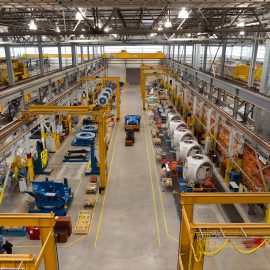

This article is an excerpt from the Shortform book guide to "The E-Myth Revisited" by Michael E. Gerber. Shortform has the world's best summaries and analyses of books you should be reading.
Like this article? Sign up for a free trial here .
What business stages must entrepreneurs understand and navigate? What are the risks of each phase?
In The E-Myth Revisited, Michael E. Gerber describes three business stages: infancy, adolescence, and maturity. He explains the characteristics—as well as the risks—of each. Business owners must learn to navigate these phases.
Keep reading to learn about the three business stages of E. Gerber.
The 3 Business Stages
It’s important to understand where your business is in the typical life cycle of a small business. There are three phases: infancy, adolescence, and maturity. Each has various characteristics and risks.
Business Stage #1: Infancy
In the infancy phase, the owner wears the technician hat. The business is driven not by what it needs, but by what the owner wants. In the infancy phase, you (the owner/technician) want a place to work as you see fit, free of constraints.
For a while, you’re happy functioning on your own. You don’t mind working fourteen hours a day, every day, because you’re used to “paying your dues,” and besides, this work is for your own business. You’re willing to do whatever it takes to keep the business afloat — doing the technical work plus buying, selling, shipping, ordering, and keeping the books. At this stage, you are the business. Your name may even be part of your business’s name (for example, Joe’s Place).
Customers appreciate your work and keep patronizing the business. But the volume of work soon exceeds your capacity to get it all done. You work harder but start having problems keeping up. Your business has taken over your life; it’s become your boss — a boss who can’t be satisfied. You have a job that’s even worse than the one you left. You may begin feeling hopeless and disillusioned. At this point, many businesses fail — the exhausted owner/technician gives up.
The problem is that you’ve neglected your roles as entrepreneur and manager. You’ve been taking solely a tactical approach focused on the work that needs to be done, rather than also taking a strategic view that would move the business forward. Part of a business owner’s role — the entrepreneurial part — is to grow the business. That role is often absent during a business’s infancy stage, as is the manager role responsible for ensuring things run smoothly.
One reason you focus on your role as technician, at the expense of your other roles, is that you enjoy doing the technical work more than entrepreneurial or management work. But a more subtle reason is that you may be unable, at this stage, to separate yourself from your business. It’s your name on the sign outside. You take pride in your work and like that customers depend on you personally to deliver your product. Further, you can’t imagine what your business would look like if you weren’t the one doing the work. But when you are your business and your business is you, you can’t get sick or take a vacation, and your business can’t grow.
Your business won’t succeed if you play or fulfill just one role because it’s the one you’re most comfortable with. You need to learn all three: creating a vision (entrepreneur), translating your vision into action through systems and processes (manager), and getting the work done (technician). When you balance all three, the business becomes energizing and rewarding rather than draining.
Business Stage #2: Adolescence
If you don’t give up in the infancy stage due to overwork, you move into the adolescent phase with the idea of hiring some help. You typically look for another technician, preferably with experience in the same field.
Also, you might look for someone with experience doing the things you don’t like doing — for instance, bookkeeping, ordering supplies, or maintaining a schedule. In fact, if you’re like most overworked owners, if you can find an experienced person, you’re happy to give up responsibility for those areas, in effect abdicating rather than delegating. You start enjoying shorter hours and less grunt work without giving much thought to what your employee is doing as long as things seem to go smoothly.
However, without your oversight, problems start to develop and mistakes are made — for instance, you don’t have supplies when you need them or the quality of your product slips and customers get upset. So you jump back in again (into your comfort zone) and start doing things yourself so they’re done right, instead of developing the managerial and entrepreneurial skills that would advance your business.
Business Stage #3: Maturity
Businesses can grow from infancy and adolescence to maturity, in which they have a clear sense of purpose and direction. But the most successful companies start out differently, already knowing where they’re going and how. Maturity isn’t a phase for these companies — they’re mature from the outset.
The entrepreneurs who started companies like McDonald’s and Federal Express had an entrepreneur’s mindset. They understood what businesses are and how they work. In addition to business knowledge, they had clear objectives and a plan.
For example, when Tom Watson founded IBM, he knew several things: He had a clear vision of what the company would look and act like, and he knew that to become a great company IBM would have to act like one from the start. He created a template for a great company and worked daily to match the company to the model. He focused on developing the business rather than “doing business.”
If entrepreneurs are to succeed, they must understand and navigate these business stages.

———End of Preview———
Like what you just read? Read the rest of the world's best book summary and analysis of Michael E. Gerber's "The E-Myth Revisited" at Shortform .
Here's what you'll find in our full The E-Myth Revisited summary :
- Why so many new business owners fail
- Why how you produce something is more important than what you produce
- The 7 components that you as an owner must work through






